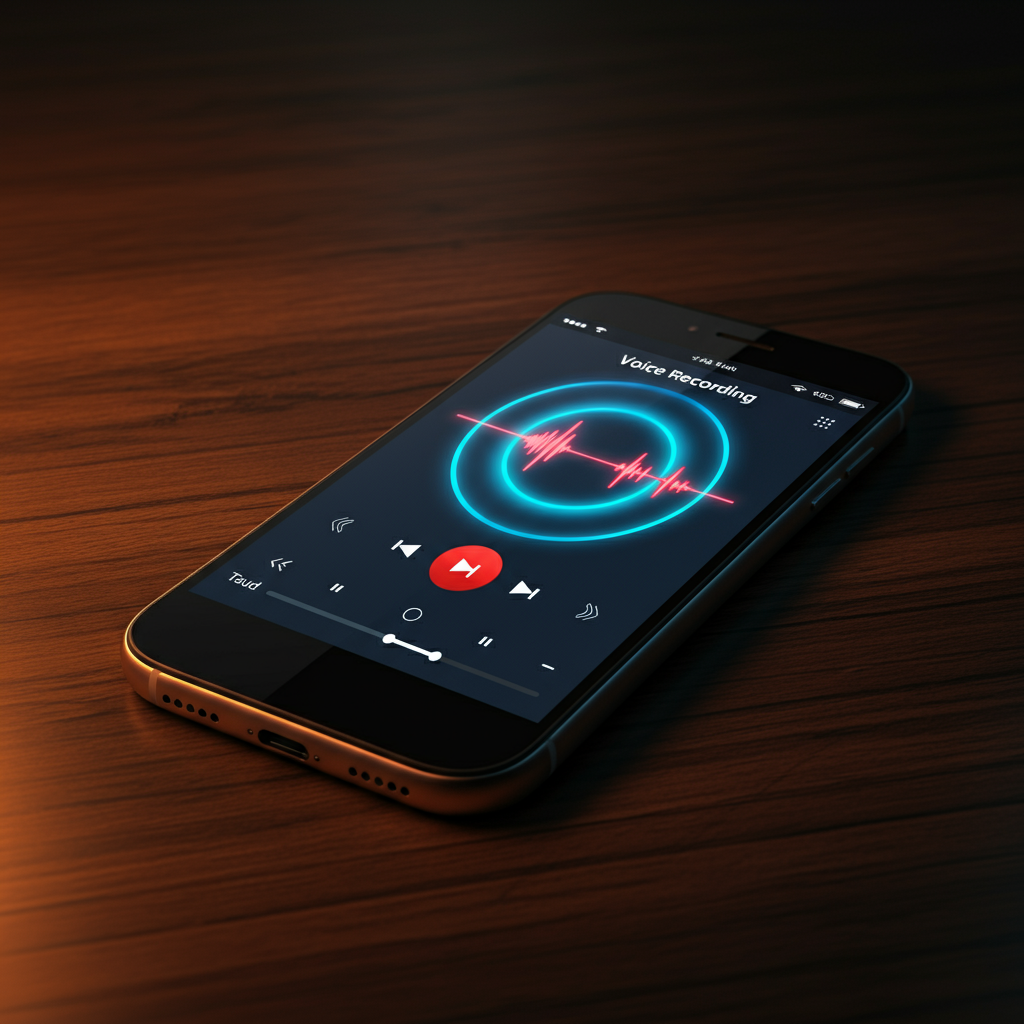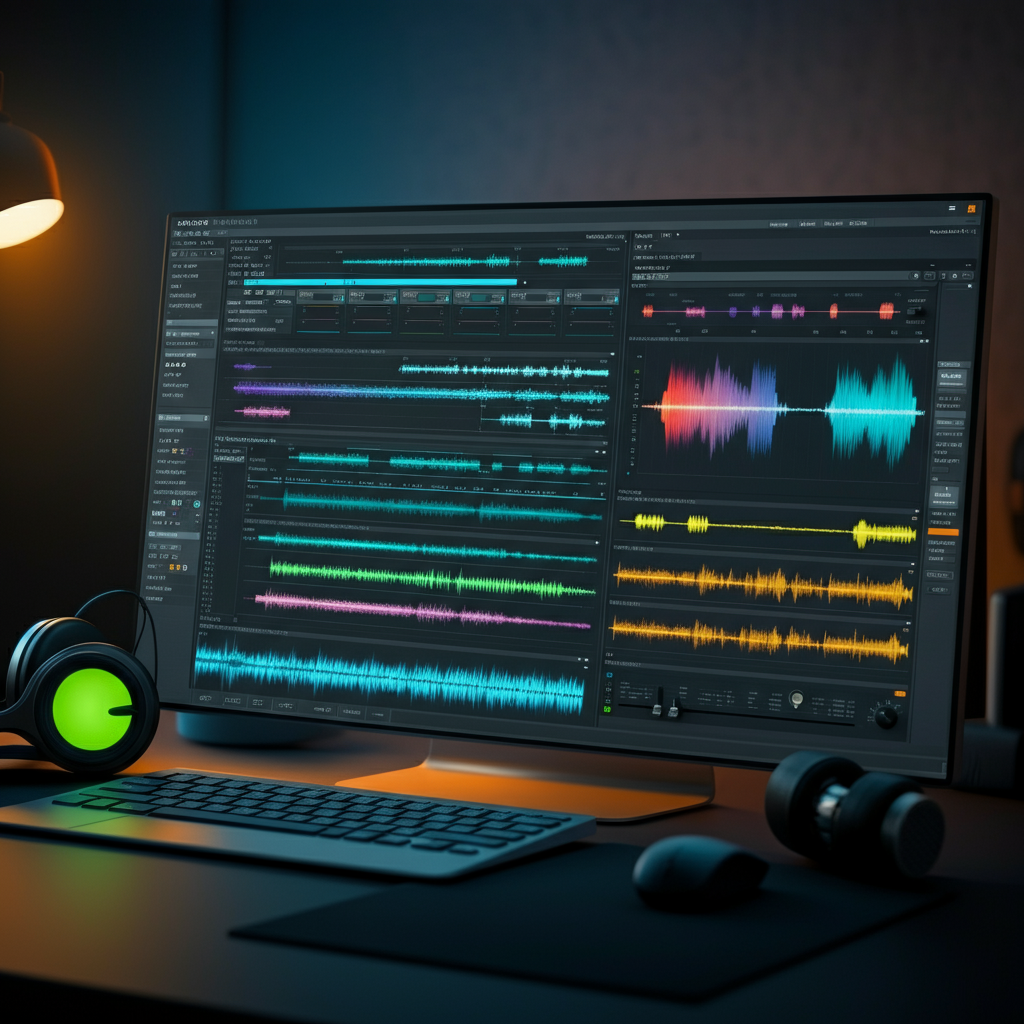Technology
|
25 June 2025
How to Make an Audio File: Easy Steps for Beginners
Written by Faizan
Full Stack Developer
Discover how to make an audio file effortlessly on Windows, macOS, and mobile. Follow this step-by-step guide for tools, tips, and pro-quality recordings!

Table of Contents
Creating an audio file might seem intimidating if you've never done it before, but it’s pretty simple when you know the steps. Learning how to make an audio file is valuable, whether crafting a podcast, recording lectures, or saving voice memos.
This guide will walk you through creating audio files on Windows, macOS, and mobile devices while introducing you to tools and tips to ensure your recordings are clear and professional.
Why Do You Need an Audio File?
Audio files are indispensable for everything from personal projects like voiceovers and streaming to professional needs such as webinars or interviews. You can quickly create high-quality recordings with a computer, smartphone, or even an external microphone.
Tools Needed to Create an Audio File
Before getting started, here’s what you’ll need:
- Device: A computer (Windows or macOS) or smartphone (Android/iOS)
- Microphone: Built-in or external, such as USB microphones or smartphone mics
- Recording Software: Apps or programs like Voice Recorder (Windows), QuickTime (macOS), or mobile apps like Voice Memos (iOS) or Easy Voice Recorder (Android)
- Optional Accessories: Pop filters for reducing background noise or audio interfaces for professional-level recording
Now, let's break down the steps for each platform.
How to Make an Audio File on Windows

Using the Built-In Voice Recorder App
Connect a Microphone: If your computer doesn’t have a built-in microphone or needs better sound quality, plug in an external microphone.
Launch Voice Recorder: Press the Windows key, type “Voice Recorder,” and select the app.
Start Recording: Tap the circular Record button and speak into the microphone. You can pause if needed or stop recording when you're done.
Save Your File: Voice Recorder automatically saves your files in .m4a format. To access it, click on the recording in the app, then choose Save or Export.
Edit if Necessary: Use the built-in editor in Voice Recorder for basic editing, like trimming unnecessary parts.
Using Third-Party Options Like Audacity (Free)
Audacity is a free, open-source tool that offers advanced features:
Download and install Audacity from its official website.
Open Audacity and select your microphone as the input device.
Click the Record button and speak. Audacity shows your audio waveforms as you record.
Use Audacity's editing tools to cut, fade, or enhance your audio.
Export your recording in the desired format (e.g., MP3, WAV).
Pro Tip: Use a USB microphone like Blue Yeti for more precise sound on Windows.
How to Create an Audio File on macOS
Mac computers come with QuickTime, an easy-to-use program for recording audio.
QuickTime Player
Connect Your Microphone: Attach a quality microphone for improved audio clarity.
Launch QuickTime: Open QuickTime from the Applications folder or use Spotlight Search.
Start a New Recording: Click File > New Audio Recording from the menu bar.
Adjust Settings: Use the drop-down menu next to the Record button to choose your microphone source.
Begin Recording: Press the red Record button and speak. Click Stop when finished.
To save the File, Go to File > Save and choose the location and format (.m4a or .mov).
GarageBand for Professional Needs
GarageBand is great for creating music, podcasts, or complex audio projects.
Open GarageBand and select Voice as the recording template.
Choose your input device and adjust the track settings.
Record your audio, edit it with GarageBand’s tools, and export it as MP3, WAV, or AAC.
If you'd like to learn how to turn your audio file into text, don’t miss our guide on how to transcribe an audio file. It’s a great way to make your audio more accessible and reusable.
How to Create an Audio File on Mobile Devices

On iOS (iPhone/iPad)
Open Voice Memos App: This pre-installed app is perfect for quick recordings.
Tap the Record Button: Speak into your microphone, then press Stop when finished.
Edit and Share: Use the Edit feature to trim unwanted sections. Share or save the recording via email, AirDrop, or iCloud.
For enhanced functionality, try third-party apps like GarageBand for iOS, which offer multitrack recording capabilities.
On Android
Install Easy Voice Recorder: Download from the Google Play Store.
Begin Recording: Open the app and press the Record button.
Save and Share: Save your recording in formats like MP3, WAV, or AAC. Then, share it directly to Google Drive or send it via email.
External Microphones for Mobile
Consider external microphones like the Zoom iQ7 for iPhones or the Rode VideoMic Me for Android for clearer audio.
Tips for Professional-Quality Audio
1. Reduce Background Noise
- Record in a quiet environment with minimal distractions.
- Use a pop filter to prevent harsh audio peaks caused by spoken plosives (like “p” and “b” sounds).
2. Choose the Right Format
- WAV: High-quality, uncompressed audio perfect for editing.
- MP3: Compressed format, ideal for sharing or online use.
3. Test Levels
Before starting, speak into the microphone and check the input levels. To prevent distortion, avoid clipping (levels in the red zone).
4. Use Editing Software
Apps like Audacity, GarageBand, or Adobe Audition can help refine your audio, remove noise, or add effects.
5. Save and Back Up
Always save your audio project in different formats and back it up in cloud storage like Google Drive or Dropbox.
Troubleshooting Common Issues
- Microphone Not Detected: Check device settings to ensure your microphone is selected as the input source.
- Low Sound Quality: Adjust input sensitivity or use an external microphone.
- File Format Issues: If your editing software doesn't support specific formats, use online tools like Zamzar to convert your audio file.
Recommended Audio Software and Resources
For exploring audio-editing tools, here are a few options to consider:
- Audacity: Free, cross-platform editor with robust features.
- GarageBand: Professional-quality multitrack editor for Apple users.
- Adobe Audition: Industry-standard editing software for advanced users.
Closing Thoughts
Making an audio file is easier than it seems, whether you’re using Windows, macOS, or a mobile device. The key is to choose the right tools, ensure a quiet recording environment, and follow the steps outlined above for professional-level results.
Whether you’re new to recording or an experienced creator, this guide offers all the tips and tricks to help you succeed.
Check out Audacity's Tutorials or Computer Hope's Audio Guides for more audio recording resources. Explore your creativity and start recording today!
FAQ on How to Make an Audio File
1. What tools do I need to create an audio file?
To create an audio file, you'll need:
- A device (computer or smartphone).
- A built-in or external microphone.
- Recording software like Voice Recorder (Windows), QuickTime (macOS), or Voice Memos (iOS).
Optional accessories include a pop filter to improve sound quality or an audio interface for professional use.
2. Can I create an audio file without an external microphone?
Yes, most devices have a built-in microphone sufficient for basic recordings. However, an external microphone like a USB mic (e.g., Blue Yeti) is recommended for clearer audio.
3. How do I create an audio file on my phone?
- iOS: Use the Voice Memos app. Open the app, press the Record button, and save your recording when finished.
- Android: Install an app like Easy Voice Recorder. Press the Record button, then save and share your audio file.
4. What file formats can I save my audio recording in?
Standard audio file formats include:
- MP3: Compressed format, ideal for sharing.
- WAV: Uncompressed, high-quality format suitable for editing.
- M4A: Default format for Voice Recorder (Windows) and Voice Memos (iOS).
5. How do I improve the quality of my recordings?
- Record in a quiet environment.
- Use a pop filter to reduce harsh sounds.
- Opt for an external microphone for clearer audio.
- Monitor and adjust input levels to avoid distortion.
6. What is the best software for editing audio files?
Free tools like Audacity (Windows, macOS) are excellent for beginners. GarageBand (macOS) and Adobe Audition (for advanced users) are other popular choices.
7. Why is my microphone not detected?
This could be due to several reasons:
- The microphone isn’t correctly connected.
- The input device isn’t selected in sound settings.
- Another app (e.g., Zoom) already uses the microphone, causing a conflict.
8. Can I record audio on macOS without installing additional software?
Yes, macOS includes QuickTime, which allows you to create simple audio recordings. Open QuickTime, select New Audio Recording and start recording.
9. How do I convert an audio file to a different format (e.g., MP3)?
To save your recordings in different formats, you can use tools like Audacity, online converters (e.g., Zamzar), or built-in exporting features in apps like GarageBand.
10. What should I do if my audio sounds too quiet?
- Ensure the microphone input levels are adjusted for optimal recording.
- Speak closer to the microphone, maintaining a consistent distance.
- Use an external microphone for better sound capture.
11. Can I record multiple audio tracks at once?
Yes, software like Audacity or GarageBand supports multitrack recording. You can record separate layers (e.g., vocals and music) and combine them during editing.
12. Where are audio recordings saved on my device?
- Windows: Recordings are often saved in the app’s default location, such as the “Documents” or “Music” folder.
- macOS: QuickTime files are saved where you specify when exporting.
- Mobile Devices are stored in the app folder (e.g., Voice Memos on iOS) or shared to cloud storage.
13. How do I back up my audio files?
- Save your files to cloud services like Google Drive or Dropbox.
- Use an external hard drive or USB stick for additional copies.
14. What’s the difference between WAV and MP3 files?
- WAV: High-quality, uncompressed audio suitable for editing and professional use.
- MP3: Compressed audio that is smaller in size, ideal for sharing and casual listening.
15. Do I need internet access to create an audio file?
No, internet access is not required unless you use an online recording or editing tool. Most devices and software work offline.
16. How do I troubleshoot recording errors?
- Check microphone connections and input selection.
- Restart your device or the recording app.
- Consult your recording software’s support documentation for specific issues.
Revolutionize Your Workflow with Transcripter
Ready to streamline your content creation?
